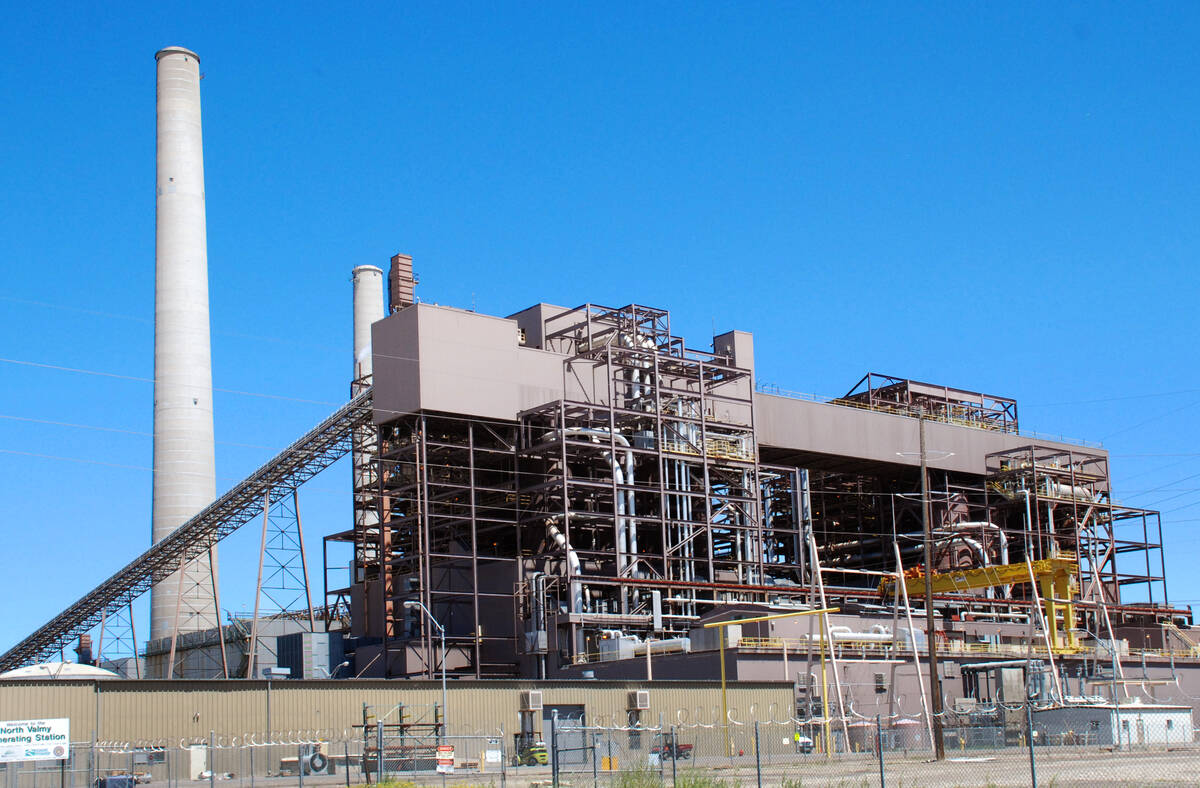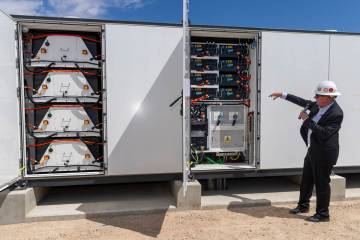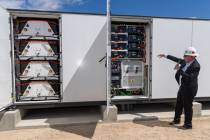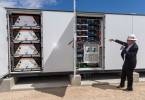NV Energy wants $1.8B to replace Nevada’s last coal plant
NV Energy is committing to shutting down its last coal plant by 2025, the utility announced Wednesday, and will spend nearly $2 billion to do it.
The news comes after questions were raised early this year on whether the state’s largest public utility was going to be able to shut down its coal operations on schedule.
NV Energy said in a news release it would submit a plan to the Public Utilities Commission by the end of the month to transition energy created at the North Valmy Generating Station in Humboldt County from coal to natural gas and to install a utility-owned 400 megawatt solar farm and 400 megawatt battery storage facility.
This plant’s transition will be detailed in a change — or fifth amendment — to the utility’s triannual plan on how it will meet future customer energy demand. A utility spokesperson told the Review-Journal it will seek approval to spend $1.84 billion to cover all the costs of these changes.
The solar farm and battery storage facilities will cost $1.5 billion, with another $71 million needed for transmission upgrades for solar, $83 million for the switch from coal to natural gas and about $187 million for other transmission and development projects, according to NV Energy. The $187 million includes $174 million earmarked for adding more transmission infrastructure in North Las Vegas.
North Valmy is the last coal plant operated by NV Energy and can generate over 500 megawatts of energy. The coal-generated power plant was set to be retired in 2025, but NV Energy’s original replacement plan — which would add two solar farms to Northern Nevada — was called into question over procurement issues related to the solar farms.
Switching Valmy’s operations from coal to gas was touted as a way for NV Energy to meet its future energy demand and goals.
“The amendment reflects the best path forward to balance the stability and reliability of our energy grid while working toward the goal of reducing carbon emissions,” said Doug Cannon, NV Energy’s president and CEO, in a statement. “By eliminating coal from the NV Energy system, we are continuing to deliver on the commitment to reduce carbon emissions for Nevada. NV Energy carefully analyzed several options for the North Valmy location to find a balanced solution that took into account reliability, affordability and sustainability.”
Advanced Energy United, an industry association that pushes for 100 percent clean energy, criticised NV Energy’s new proposal for pushing forward major projects in an amendment that shortcuts the planning process and focusing on replacing coal with natural gas.
“We’re also surprised to see NV Energy risking ratepayers’ bills and the state’s electric reliability by doubling down on unreliable, volatile out-of-state gas,” Sarah Steinberg, director at Advanced Energy United, said in an emailed statement. “Across the country we’ve seen bills skyrocket and power grids threatened by over-reliance on gas that doesn’t hold up in extreme weather, and we’d hope that NV Energy would have learned from those mistakes.”
NV Energy’s recent proposals have run in the hundreds of millions. The fourth amendment NV Energy proposed for its infrastructure plan asked the PUC to approve more than $827 million in spending. The third amendment sought over $348 million to spend on energy electrification transportation infrastructure, but the PUC only approved $70.1 million for that plan.
The spending sought in the fourth amendment would cover adding a $353 million natural gas facility in Clark County and a $466 million battery storage facility at Valmy. The Clark County natural gas facility was approved, with the PUC saying additional power generation was needed for the summer months. The Valmy energy storage facility was rejected since the PUC thought it didn’t go far enough to address concerns around shutting down the coal operations at Valmy.
NV Energy’s original plan to replace Valmy’s coal operations was to add two large solar projects called Hot Pot and Iron Point that were set to add a combined 600 megawatts of energy and 480 megawatts of storage. But filings with the PUC indicated that these two solar projects couldn’t get developed in time because of procurement issues to replace Valmy’s coal power.
Contact Sean Hemmersmeier at shemmersmeier@reviewjournal.com. or @seanhemmers34 on Twitter.





























